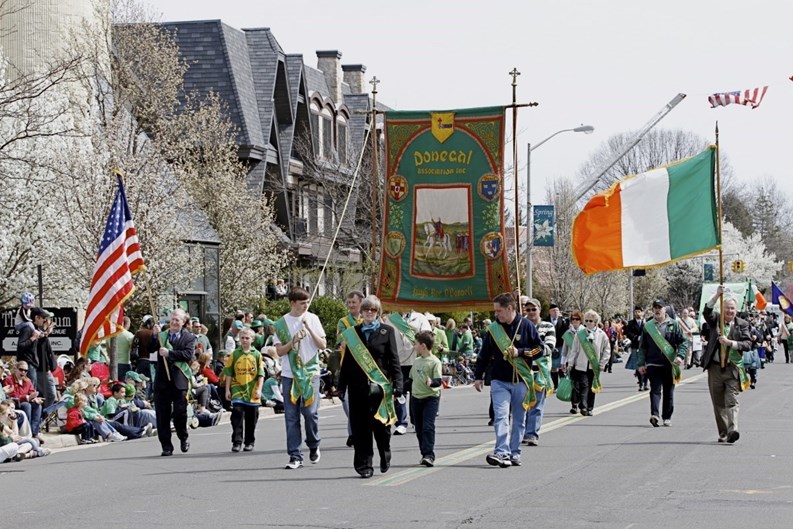This vibrant Long Island community boasts several parks with first-rate amenities, recreation centers and a thriving business district overflowing with shops, art galleries and restaurants. In fact, there are over 150 acres of parks, ball fields and playgrounds, and a municipal government which provides the most comprehensive range of services found anywhere on Long Island.
Located on the southwest shore of Long Island in the town of Hempstead, Rockville Centre is a scant 25 miles east of midtown Manhattan and a short 15 minute drive to JFK.
Residents enjoy a multitude of annual events ranging from a 10-kilometer race and street fair to a springtime arts festival, summer concerts, and holiday events and programs for all age groups. The village is also home to 11 churches, two synagogues and the Catholic Diocese of Rockville Centre. The family-oriented villagers pride themselves on a keen desire to preserve the good life.
Rock musician Joan Jett, radio personality Howard Stern, former major league baseball Hall-of-Famer Sandy Koufax, Segway inventor Dean Kamen, college basketball coaches Jay Wright and Billy Donovan, Pulitzer Prize-winning author Doris Kearns Goodwin, and reality TV star Bethenny Frankel, among other celebrities, were either born or have resided in the affluent village during their careers.
Village History
In 1655, New York governor Richard Nicolls wrote the magistrates of the newly-established town of Hempstead in 1655 and insisted Sachem Tackapousha, a chief for the Reckouackie Indians, who formerly occupied the area, to be further compensated because he thought the payment for the land was purchased at such a cheap price. In addition to the original payment, the governor arranged for Tackapousha and six other chiefs to be given “some great cattle, and some small cattle, and some wampum, and some hatchets, some knives, some trading cloth and some powder and lead.” According to Nicholls, the Indians went away “very well satisfied.”
Population slowly increased throughout the 17th century and with the building of DeMott’s Mill on Smith’s Pond, Rockville Centre’s reputation as a burgeoning commercial center on the south shore was solidified.
In 1849, Robert Petit applied to the United States Post Office for permission to open a post office in his general store but Washington rejected the names Smithville, Smithtown and Rockville. Petit then added Centre to the name Rockville after Mordecai Rock Smith, a Methodist preacher, blacksmith, farmer and justice of the peace, whose father operated a local mill. The postal service thought that the name was a “distinctive sounding designation” and thus, Rockville Centre was officially on the map.
Three years later a handful of stagecoaches began carrying passengers from Rockville Centre to New York City and back every week. The road was considered a great technological advance as opposed to the previous dirt roads. The “Plank Road” is now known as Merrick Road.
In 1865, Rockville Centre’s first newspaper “The Picket” was published. “The Picket,” which was later known as the “Daily Review” and then the “Nassau Daily Review,” would go on to run for 88 years.
All Aboard
Two years later the Long Island Railroad arrived and ushered Rockville Centre into the modern area. The local newspaper reported the commuter rates between Rockville Centre and New York City was $30 for two months, $45 for six months and $65 a year.
With the existence of the postal service and better transportation options, real estate development was sure to follow. The town’s historian reports that the village now contained around 300 homes, a few stores, two schools with eight teachers, and churches used by Baptist, Episcopalian, Methodist, and Roman Catholic worshippers, in an area of under two square miles.
The opening of the Bank of Rockville Centre brought the first commercial bank to Long Island’s south shore in 1891. The bank was located on the corner of Merrick Road and North Village Avenue. Banking was a growth industry in the village and by 1929 Rockville Centre was considered a leading financial center in Long Island.
In 1893, Rockville Centre voted for home rule and was incorporated, and the town’s first policeman Joseph Shelly was hired and paid a salary of $500 a year. Before its establishment as a municipality, Rockville Centre enjoyed many community services, including a volunteer fire company, a public library and the South Shore’s first high school, “South Side High.”
The town is memorialized in Doris Kearns Goodwin’s memoir “Wait Till Next Year.” In this best-selling novel, she writes about growing up in Rockville Centre during the 1950s, fondly recalling her love for her town, her family and America’s pastime, baseball.
Rockville Centre Today
Rockville Centre residents take pride in their community’s rich history, schools, houses of worship and thriving businesses. As of the 2000 census, a total of 24,568 residents enjoy life in a thriving community of 3.4 square miles, with 9,200 housing units, more than 400 retail and service shops as well as professional and corporate offices, seven parochial and public schools, a college, and 15 diverse religious denominations.
As former resident Kearns Goodwin attests, it was a great place to live and grow up in and still remains so today.
Christy Smith-Sloman is a staff writer for The Cooperator and other publications.





Leave a Comment